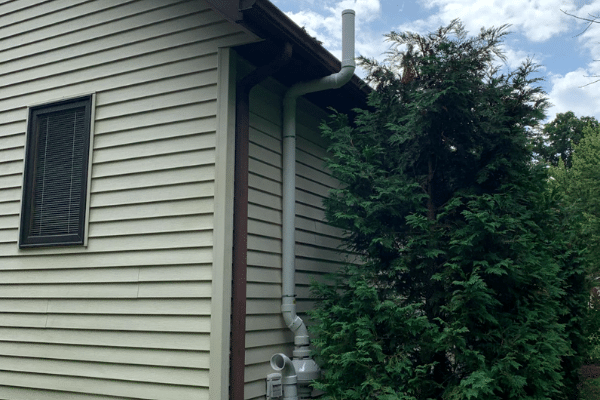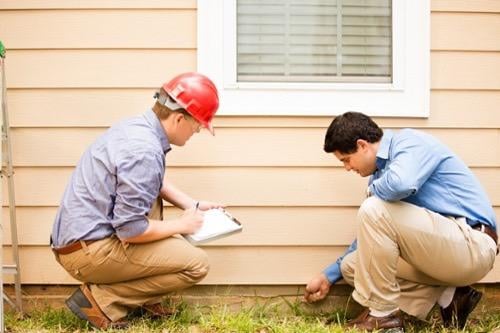One of the most common questions about radon mitigation we get from our clients at Radon Eliminator after they see their elevated radon levels and learn they need a radon mitigation system is if it's going to require a lot of maintenance.
Fortunately, properly installed radon mitigation systems only require occasional maintenance and can easily be added to your home's routine maintenance schedule.
In the article below, we will go over a few maintenance tips for your radon mitigation system that will be sure to keep your levels of radon low.
Table of Contents
- What's A Radon Mitigation System?
- Does A Radon Mitigation System Require Maintenance?
- Test Your Home For Radon
- What If My Mitigation System Isn't Working?
- Contact Radon Eliminator

What's A Radon Mitigation System?
Generally, a radon mitigation specialist will install your radon mitigation system as a sub-slab-depressurization system.
It may seem complicated, but it's pretty simple.
This system consists of a fan unit that runs for 24 hours and creates a pull, or depressurization, to pull the radon gas out of the soil before it can enter your home.
The sub-slab part of the system means it's installed under the foundation of your home, whether that's a basement slab, crawl space floor, or slab-on-grade construction.
And radon gas can be present in a home, whether you have a basement or not.
Any home in any part of the country can have elevated levels of radon gas.
If there are elevated levels of radon in the soil beneath your home, there's a good chance your home is going to have elevated levels of radon.
The majority of radon mitigation systems consist of:
- a radon fun unit that creates depressurization
- an electrical power supply for the radon fan
- a radon pipe that pushes the airflow outside
Most radon control systems also have a manometer device that gives you a visual indication that the system is operating properly.
You may be wondering if you even need a radon mitigation system. To answer that, read our blog post: "Do I Need to Worry About Radon?"
Does A Radon Mitigation System Require Maintenance?
Similar to your chimney, HVAC system, and many other continuously used systems in your home, radon mitigation systems are self-sufficient for the most part.
Outside of a regular visual inspection, there's not much more that needs regularly doing to keep your mitigation system working and your level of radon in the safe zone.
The most important part of the typical radon mitigation system is the radon mitigation fan that feeds your radon pipe.
Its power and continuous work keep radon from building to unsafe levels.
The fans in radon reduction systems should continuously operate, so fan upkeep and maintenance are necessary.
Fortunately, radon fans come with a warranty covering repairs and replacement for up to five years.
Properly installed radon mitigation systems have a warning device to notify you of any radon mitigation system failures.
The Environmental Protection Agency (EPA) requires the installation of devices with all approved radon mitigation systems, so make sure that your mitigation system has this warning device installed.
You should check the functionality of your radon warning device as part of your regular check-up and maintenance routine.
Checking your warning device once every three months takes only a bit of scheduling time on your part. It is a simple and straightforward process to make sure your system is functioning correctly.
The two most essential parts of radon mitigation system maintenance, your fan and your warning system, rely upon each other and require only occasional check-ins to ensure proper functionality.
Maintaining your radon mitigation system isn't a hassle, and it protects your family from this harmful radioactive radon gas.
Test Your Home For Radon
The best way to ensure your radon mitigation system functions correctly is to test your home for radon.
The EPA recommends that you test your home every two years to verify radon levels in the house and ensure that your mitigation system is operating correctly.
The most effective radon testing method is to contact the radon professionals who installed your radon mitigation system.
They will test your home to make sure your system is working correctly, and you and your family are still safe from the effects of radon gas, like lung cancer.

What If My Mitigation System Isn't Working?
If your levels come back high after testing, your fan isn't working, or your warning system alerts you, you need to call your radon contractor.
A licensed radon professional will troubleshoot your system and make necessary repairs, including replacing your radon fan.
Typical fan replacement costs will depend on the area of the country you're in and the type of fan you have.
The average cost to replace your fan is around $250-$400.
Testing your home every two years will ensure that your levels remain low and your system is operating correctly.
Contact Radon Eliminator
If you think your radon mitigation system isn't functioning correctly, contact Radon Eliminator for a system inspection.
When you know that your system is functioning the way it should, you will have peace of mind and breathe a little easier.
If it's been more than two years since your last air quality test, Radon Eliminator can also test for radon in your home to ensure your radon levels are still safe.
Click the button below to schedule your Discounted Test today to ensure your system is working and keeping you safe from radon.





